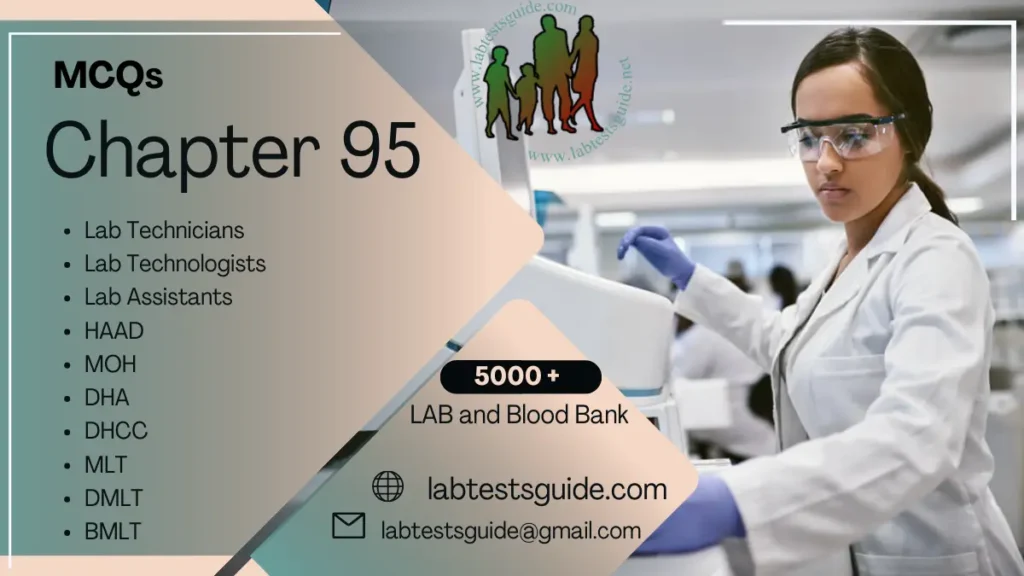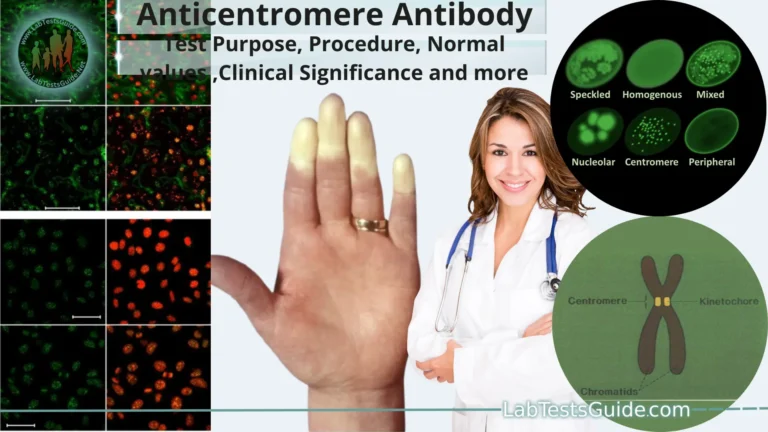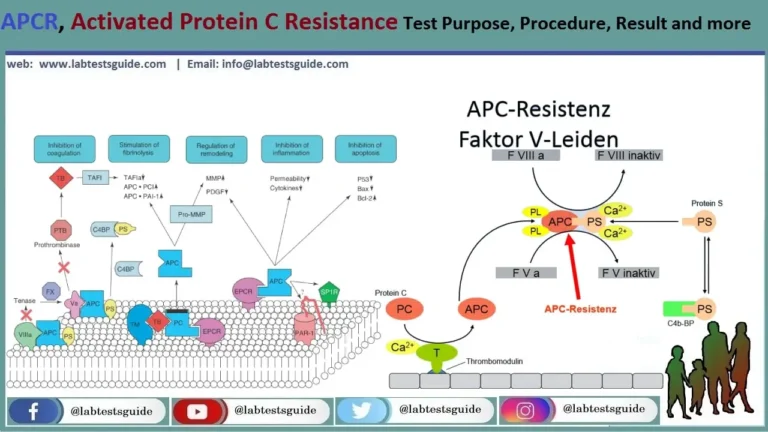4701 to 4750 MCQs for Lab Technician and Technologist Exam Preparation
5000 Plus MCQs for Lab Technician and Technologists are designed to test the knowledge and proficiency of laboratory professionals who work in the field of clinical laboratory science. These questions cover a wide range of topics related to laboratory science, including anatomy, physiology, microbiology, chemistry, and hematology.

If You like then share this to your friends and other social media.
If You have any question and suggestions then please Contact us Here
Questions 4701 to 4750
- Serum cholesterol is decreased in
- Endemic goitre
- Thyrotoxicosis✔
- Myxoedema
- Cretinism
- The heptose ketose sugar formed as a result of chemical reaction in HMP shunt:
- Sedoheptulose✔
- Galactoheptose
- Glucoheptose
- Mannoheptose
- The general formula for polysaccharide is
- (C6H12O6)n
- (C6H10O5)n✔
- (C6H12O5)n
- (C6H19O6)n
- The number of isomers of glucose is
- 4
- 8
- 12
- 16✔
- The epimers of glucose is
- Fructose
- Galactose✔
- Ribose
- Deoxyribose
- The intermediate in hexose monophosphate shunt is
- D-Ribulose✔
- D-Arobinose
- D-xylose
- D-lyxose
- Honey contains the hydrolytic product of
- Lactose
- Maltose
- Inulin✔
- Starch
- On boiling Benedict’s solution is not reduced by
- Sucrose✔
- Lactose
- Maltose
- Fructose
- Glycosides are found in many
- Vitamins
- Drugs✔
- Minerals
- Nucleoproteins
- Galactose on oxidation with conc. HNO3 produces
- Gluconic acid
- Saccharic acid
- Saccharo Lactone
- Mucic acid✔
- The distinguishing test between monosaccharides and dissaccharides is
- Bial’s test
- Selwanoff’s test
- Barfoed’s test✔
- Hydrolysis test
- Cellulose is made up of the molecules of
- α-glucose
- β-glucose✔
- Both of the above
- None of these
- Iodine solution produces no color with
- Cellulose✔
- Starch
- Dextrin
- Glycogen
- Amylose contains glucose units
- 100–200
- 200–300
- 300–400✔
- 500–600
- Each branch of amylopectin is at an interval of glucose units:
- 14–20
- 24–30✔
- 34–40
- 44–50
- N-acetylneuraminic acid is an example of
- Sialic acid✔
- Mucic acid
- Glucuronic acid
- Hippuric acid
- Blood group substances consist of
- Lactose
- Maltose
- Fructose
- Mucose✔
- The component of cartilage and cornea is
- Keratosulphate✔
- Chondroitin sulphate
- Cadmium sulphate
- Antimony sulphate
- Benedict’s test is less likely to give weakly positive results with concentrated urine due to the action of
- Urea✔
- Uric acid
- Ammonium salts
- Phosphates
- Active transport of sugar is depressed by the agent:
- Oxaloacetate
- Fumarate
- Malonate✔
- Succinate
- The general test for detection of carbohydrates is
- Iodine test
- Molisch test✔
- Barfoed test
- Osazone test
- Glucose absorption may be decreased in
- Oedema
- Nephritis✔
- Rickets
- Osteomalitis
- Glycogen synthetase activity is depressed by
- Glucose
- Insulin
- Cyclic AMP✔
- Fructokinase
- The branching enzyme acts on the glycogen when the glycogen chain has been lengthened to between glucose units:
- 1 and 6
- 2 and 7
- 3 and 9
- 6 and 11✔
- Cyclic AMP is formed from ATP by the enzyme adenylate cyclase which is activated by the hormone:
- Insulin
- Epinephrine✔
- Testosterone
- Progesterone
- Hexokinase has a high affinity for glucose than
- Fructokinase
- Galactokinase
- Glucokinase✔
- All of the above
- Dihydroxyacetone phosphate and glyceraldehyde-3-phosphate are intercoverted by
- Triose isomerase✔
- Phosphotriose isomerase
- Diphosphotriose isomerase
- Dihydroxyacetone phosphorylase
- Citrate is converted to isocitrate by aconitase which contains
- Ca++
- Fe++✔
- Zn++
- Mg++
- The reaction succinyl COA to succinate requires
- CDP
- ADP
- GDP✔
- NADP+
- The carrier of the citric acid cycle is
- Succinate
- Fumarate
- Malate
- Oxaloacetate✔
- UDPG is oxidized to UDP glucuronic acid by UDP dehydrogenase in presence of
- FAD+
- NAD+✔
- NADP+
- ADP+
- Galactose is phosphorylated by galactokinase to form
- Galactose-6-phosphate
- Galactose-1, 6 diphosphate
- Galactose-1-phosphate✔
- All of these
- The conversion of alanine to glucose is termed
- Glycolysis
- Oxidative decarboxylation
- Specific dynamic action
- Gluconeogenesis✔
- The blood sugar raising action of the hormones of suprarenal cortex is due to
- Gluconeogenesis✔
- Glycogenolysis
- Glucagon-like activity
- Due to inhibition of glomerular filtration
- Under anaerobic conditions the glycolysis one mole of glucose yields __ moles of ATP.
- One
- Two✔
- Eight
- Thirty
- Which of the following metabolite integrates glucose and fatty acid metabolism?
- Acetyl CoA✔
- Pyruvate
- Citrate
- Lactate
- Cerebrosides consist of mostly of this sugar:
- Glucose
- Fructose
- Galactose✔
- Arabinose
- Glucose will be converted into fatty acids if the diet has excess of
- Carbohydrates✔
- Proteins
- Fat
- Vitamins
- The purple ring of Molisch reaction is due to
- Furfural
- Furfural + α Napthol✔
- °C Napthol
- Furfurol + H2SO4 + α -Naphthol
- One of the following enzymes does not change glycogen synthase a to b.
- Glycogen synthase kinases 3, 4, 5
- Ca2+ calmodulin phosphorylase kinase
- Ca2+ calmodulin dependent protein kinase
- Glycogen phosphorylase a✔
- In EM pathway -2-phosphoglycerate is converted to
- Phospho enol pyruvate✔
- Enol pyruvate
- Di hydroxy acetone phosphate (DHAP)
- 1,3 bisphosphoglycerate
- An aneplerotic reaction which sustains the availability of oxaloacetate is the carboxylation of
- Glutamate
- Pyruvate✔
- Citrate
- Succinate
- Specific test for ketohexoses:
- Seliwanoff’s test✔
- Osazone test
- Molisch test
- None of these
- Two important byproducts of HMP shunt are
- NADH and pentose sugars
- NADPH and pentose sugars✔
- Pentose sugars and 4 membered sugars
- Pentose sugars and sedoheptulose
- Pyruvate dehydrogenase complex and α-ketoglutarate dehydrogenase complex require the following for their oxidative decarboxylation:
- COASH and Lipoic acid
- NAD+ and FAD
- COASH and TPP
- COASH, TPP,NAD+,FAD, Lipoate✔
- The four membered aldose sugar phosphate formed in HMP shunt pathway is
- Xylulose P
- Erythrulose P
- Erythrose P✔
- Ribulose P
- Cane sugar (Sucrose) injected into blood is
- changed to fructose
- changed to glucose
- undergoes no significant change
- changed to glucose and fructose✔
- Pentose production is increased in
- HMP shunt✔
- Uromic acid pathway
- EM pathway
- TCA cycle
- Conversion of Alanine to carbohydrate is termed:
- Glycogenesis
- Gluconeogenesis✔
- Glycogenolysis
- Photosynthesis
- The following is an enzyme required for glycolysis:
- Pyruvate kinase✔
- Pyruvate carboxylase
- Glucose-6-phosphatase
- Glycerokinase
The questions are typically designed to assess the technical skills and knowledge required for the laboratory profession, including the ability to analyze laboratory test results, perform laboratory procedures, and maintain laboratory equipment.
To prepare for these MCQs, candidates should have a thorough understanding of the key concepts and principles of laboratory science. They should also be familiar with common laboratory equipment and procedures, as well as laboratory safety protocols.
Candidates may also benefit from studying specific laboratory science textbooks or taking online courses that cover the material tested in the MCQs. Additionally, practicing sample MCQs and reviewing the answers can help candidates identify areas where they may need to improve their knowledge or skills.
Overall, the MCQs for lab technologists are designed to be challenging and comprehensive, requiring candidates to demonstrate a high level of proficiency in the field of laboratory science.
Possible References Used





